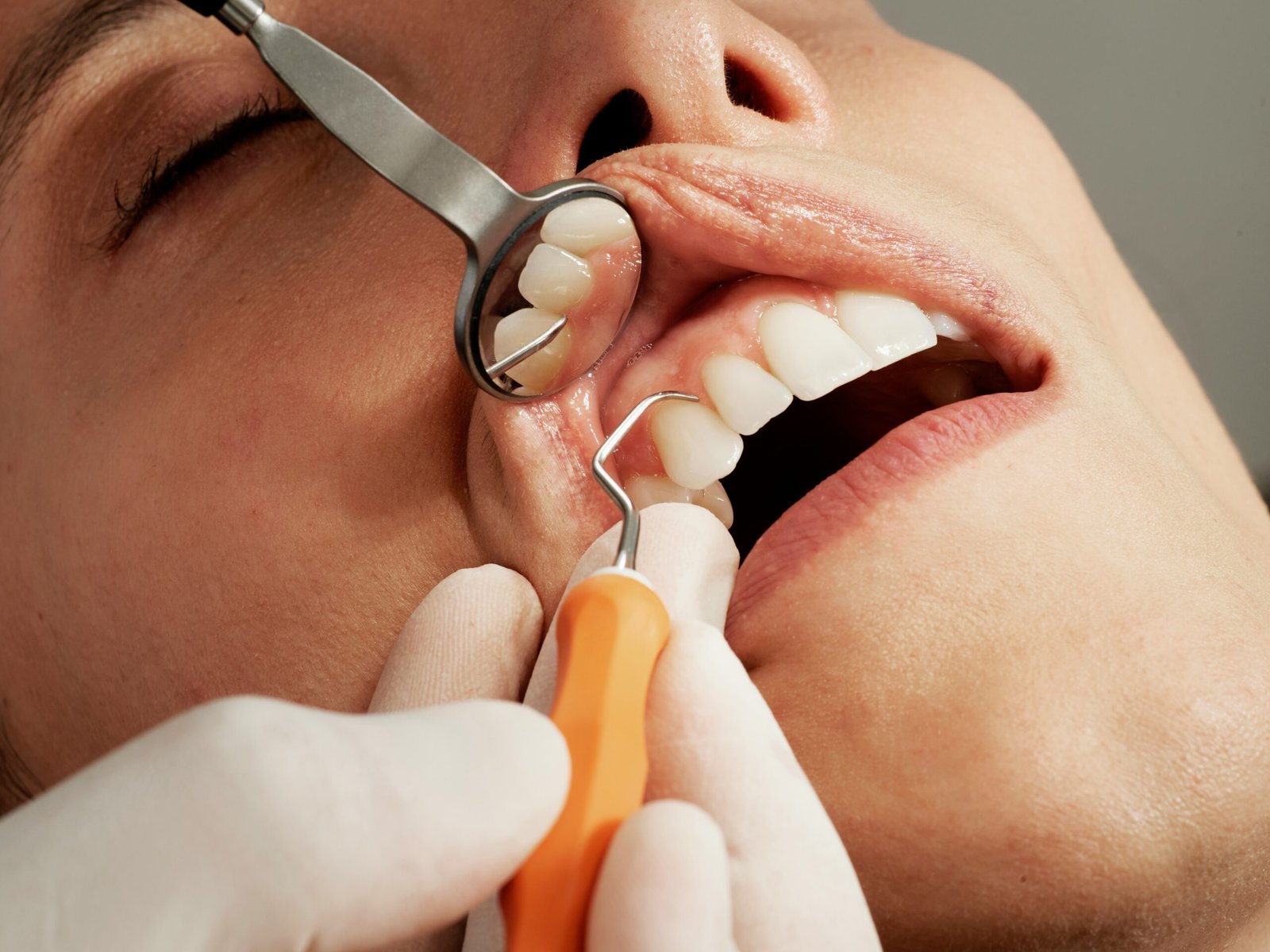Dental Bridges Overview
Dental bridges are like the superheroes of the dental world, swooping in to save the day when teeth go missing. They bring back the sparkle to your smile and make chewing a breeze again. Knowing the ins and outs of these bridges can help you pick the right one for your pearly whites.
Types of Dental Bridges
Dental bridges come in a few flavors, each with its perks. Let’s break it down:
- Traditional Dental Bridges: These are the old faithful. They involve putting crowns on the teeth or implants next to the gap, with a fake tooth (pontic) in the middle. They’re the go-to choice for most folks.
- Maryland Bridges: These are the less pushy options. They use a metal or porcelain frame glued to the back of nearby teeth to hold the fake tooth. Coughing the neighboring teeth is unnecessary, making it a gentler choice. Check out more at Dental Bridge.
- Cantilever Bridges are one-sided wonders. They’re perfect when there’s only one tooth next to the gap. Just one tooth gets a crown. More info is available at Cantilever Bridge Dental.
- Implant-Supported Bridges: These are the heavy lifters. They involve putting implants in the jaw to hold the fake teeth. They offer top-notch support for the jaw and surrounding teeth. Learn more at Dental Implant Bridge.
| Type of Bridge | Description | Pros | Cons |
|---|---|---|---|
| Traditional | Crowns on both sides with a pontic in between | Strong and durable | Requires removal of tooth structure |
| Maryland | Metal/porcelain framework bonded to adjacent teeth | Less invasive | Less durable |
| Cantilever | Crown on one side only | Good for limited adjacent teeth | Less stable |
| Implant-Supported | Implants in jawbone with false teeth | Superior support | Requires surgery |
Lifespan of Dental Bridges
How long these bridges stick around depends on a few things, like the type, materials, and how well you treat them. On average, they hang in there for 5 to 15 years (Humana).
- Traditional Bridges: With some TLC, they can last 10-15 years.
- Maryland Bridges: Usually stick around for 5-10 years since they’re not as strict.
- Cantilever Bridges: Similar to traditional ones, they can last 10-15 years.
- Implant-Supported Bridges: These champs can last 15 years or more, thanks to their sturdy support.
Keeping your mouth clean and visiting the dentist regularly is key to lasting your bridge. For tips on bridge care, visit dental bridge cost.
By learning about the different types of dental bridges and how long they last, you can make a smart choice for your dental needs. If you’re eyeing a Maryland bridge, weigh the pros and cons and consider the cost compared to other options like implants.
Maryland Bridges Explained
Maryland Bridge Design
Maryland bridges are a nifty dental fix for missing teeth, sparing you from the heavy-duty drilling that comes with traditional bridges. They skip the enamel-chopping step and instead use a clever setup: a fake tooth (pontic) with thin metal or porcelain “wings” that latch onto the back of your neighboring teeth with some super-strong dental glue.
Here’s why Maryland bridges are a hit:
- Gentle on Teeth: The wings stick to the back, keeping your natural teeth intact.
- Looks Good: Porcelain and metal ensure the bridge fits right in with your other teeth.
- Fast Fix: The bonding is quick, so you can quickly flash your new smile.
| Feature | Description |
|---|---|
| Material | Porcelain and metal pontics |
| Attachment | Two wings bonded to the back of adjacent teeth |
| Adhesive | Strong dental adhesive |
Are you curious about other dental bridge types? Check out our dental bridge article.
Longevity of Maryland Bridges
Maryland bridges are built to last, offering a solid solution for tooth replacement. With good care, they can last 10 to 20 years. How long they last depends on a few things: how well you keep your teeth clean, the quality of the glue, and regular dentist visits.
| Factor | Impact on Longevity |
|---|---|
| Oral Hygiene | Good brushing and flossing can make the bridge last longer. |
| Dental Adhesive | Top-notch adhesive keeps the bridge secure. |
| Regular Check-ups | Dentist visits catch problems early. |
After getting a Maryland bridge, you should be able to eat and chat like normal, with little to no discomfort. Plus, they can be taken out without messing up your teeth. Typically, they’re swapped out every 15-20 years and rebonded every 5 years to keep them working well (Luxe Dental Care).
Want to know more about the cost of Maryland bridges and how they stack up against other options? Check out our articles on dental bridge cost and dental bridge vs implant.
Benefits and Risks
Benefits of Dental Bridges
Dental bridges are like the Swiss Army knife of dental solutions, offering a bunch of perks for those looking to patch up their smile and get their oral health back on track. Here’s why folks love them:
- Smile Makeover: Dental bridges are the magic wand that fills the gap left by missing teeth, bringing back that natural grin. This can be a real confidence booster and make your face look fab.
- Chew and Chat Like a Pro: Missing teeth can mess with your munching and chatting. Bridges step in to save the day, helping you chew and speak without a hitch and keeping your bite in check.
- Easy on the Wallet: Compared to implants, bridges are a more budget-friendly option and comfier than partial dentures, especially if you’re missing a few teeth in a row (Cleveland Clinic).
- Stay in Line: The neighbors tend to wander when teeth go missing. Bridges keep everything in line, preventing your teeth from playing musical chairs and causing bite issues.
Risks and Complications
Dental bridges are pretty awesome, but they’re not without their quirks. Here’s the scoop on what could go sideways:
- Ouch Factor: Some folks might feel a nagging pain around the bridge. This could be due to a bad fit, an infection, or other dental drama (Aesthetic Dental Associates).
- Sensitive Teeth: Feeling the burn with hot or cold stuff? It’s a common hiccup after getting a bridge. Chatting with your dentist might be okay if it sticks around.
- Gum Grumbles: Swollen or sore gums around the bridge could indicate gum disease or irritation. Regular dental visits and good hygiene can help keep your gums happy.
- Chewing Challenges: If chomping becomes a chore, it might be due to a misaligned bridge or issues with the teeth holding it up. It’s time to call in the pros if chewing gets tricky.
| Potential Complications | Description |
|---|---|
| Ouch Factor | Ongoing discomfort around the bridge area |
| Sensitive Teeth | Increased sensitivity to hot or cold foods |
| Gum Grumbles | Swelling or tenderness in the gums |
| Chewing Challenges | Problems with chewing due to misalignment or support issues |
Spot any of these red flags? A trip to the dentist for a check-up is a must (Prescott Valley Family Dentistry). Regular visits and keeping your mouth clean can help dodge these issues and keep your bridge in tip-top shape.
For more scoop on dental bridges and what they’ll set you back, check out our articles on dental bridge and dental bridge cost. If you’re weighing your options, our comparison of dental bridge vs implant might be just the ticket.
Care and Maintenance
Taking care of your dental bridges, including Maryland bridges, is like giving your smile a long-lasting hug. This section explains how to keep your mouth in tip-top shape and why regular trips to the dentist are more important than your morning coffee.
Oral Hygiene for Bridges
Keeping dental bridges clean is like keeping your car shiny—it’s all about avoiding the gunk. Plaque is the enemy, and it can lead to gum disease and tooth decay if you let it hang around. Here’s how to keep your bridges squeaky clean:
- Brushing: Get cozy with your toothbrush twice a day. Use a soft-bristled brush and fluoride toothpaste, and give extra love to the area around the bridge.
- Flossing: Flossing is your bridge’s best friend. Use dental floss or those nifty interdental brushes to clean between your teeth and around the bridge. Floss threaders are like your personal GPS for navigating around the bridge.
- Mouthwash: Swish with an antibacterial mouthwash to kick plaque and bacteria to the curb.
- Diet: Steer clear of sticky and hard foods that might mess with your bridge or make it wobbly.
Regular Dental Check-ups
Think of regular dental check-ups as your bridge’s spa day. They’re key to catching any hiccups early and keeping your bridge in mint condition. As bridges age, they might face wear and tear or changes in the teeth and gums that support them.
During these check-ups, your dentist will:
- Examine the Bridge: Look for any signs of damage or wear. It’s like a bridge health check-up.
- Assess Oral Health: Check out your gums and the teeth holding up the bridge.
- Professional Cleaning: Give your mouth a deep clean to banish plaque and tartar.
- X-rays: Snap some X-rays if needed to monitor the bridge and its surroundings.
Regular visits to the dentist are like a safety net, catching problems before they become big headaches. For more on why dental check-ups matter, could you read our article on dental implants?
Stick to these care tips; your Maryland bridge will be your trusty sidekick for years. For more tricks on keeping your dental bridge in top shape, check out our articles on dental bridge and dental bridge cost.
Cost Considerations
The price tag is a biggie when considering swapping out those missing teeth. Let’s break down what you’ll be shelling out for Maryland bridges versus implant bridges.
Maryland Bridge Cost
Maryland bridges are like the budget-friendly option in the world of tooth replacement. You can snag one of these babies for anywhere between $1500 and $2500 if you replace one tooth (Luxe Dental Care). The price can fluctuate depending on how many teeth you’re fixing and what materials you use.
| Component | Cost Range |
|---|---|
| Pontic (Replacement Tooth) | $2000 – $3500 |
| Wing (Per Side) | $500 – $750 |
Figures courtesy NYC Smile Design
Maryland bridges work by sticking a fake tooth to the backs of the teeth next door using a metal or porcelain frame. This setup keeps the costs down while still giving you a smile that looks good and works well.
Comparison with Implant Bridges
Now, if you’re thinking about getting an implant bridge, be ready to dig deeper into your pockets. These can cost up to four times more than Maryland bridges.
| Bridge Type | Cost Range |
|---|---|
| Maryland Bridge | $1500 – $3500 |
| Implant Bridge | $4000 – $15000 |
Implant bridges involve putting titanium posts into your jawbone to hold the fake teeth. This procedure is a bit more intense and takes longer to heal, which is why it costs more. For the nitty-gritty on implant costs, check out our article on dental implant costs.
Maryland bridges are cheaper but less common. They’re best for folks with strong teeth nearby and top-notch oral hygiene. Implant bridges, while pricier, offer a more lasting fix. For a full-on comparison, see our article on dental bridge vs. implant.
Getting a handle on Maryland and implant bridge costs can help you make the tooth replacement choice that fits your wallet and needs.
Procedure Details
Maryland Bridge Procedure
Maryland bridges are like the cool cousin of regular bridges—they don’t mess with your healthy tooth enamel. Instead, they come with a prosthetic tooth and nifty metal “wings” that stick to the back of nearby teeth using a composite resin. The whole process is a quick breeze and involves no scary drills.
Here’s how it goes down:
- Preparation: The dentist gives the back of your nearby teeth a little rough-up to help the bridge stick better.
- Bonding: A special resin is slapped onto those roughed-up surfaces.
- Placement: The Maryland bridge has metal wings and is set up behind the adjacent teeth.
- Curing: A special light hardens the resin, locking the bridge.
This method ensures your Maryland bridge stays put, offering a solid fix for missing teeth.
Post-Procedure Care
Maryland bridges are tough cookies, lasting years if you treat them right and keep up with your oral hygiene. You should be able to chow down and chat immediately, with little to no discomfort (Premier Dental Center).
To keep your Maryland bridge in tip-top shape, follow these tips:
- Oral Hygiene: Brush twice daily and floss daily, focusing on the area around the bridge to keep plaque at bay.
- Regular Check-ups: Hit up your dentist regularly to check on the bridge and the health of your other teeth.
- Avoid Hard Foods: Steer clear of chomping on hard stuff that might mess up the bridge or pop it loose.
- Use a Mouthguard: If you’re a nighttime teeth grinder, a mouthguard can help protect your bridge.
For more on keeping dental bridges in good shape, check out our section on oral hygiene for bridges.
Stick to these tips, and you’ll enjoy your Maryland bridge for years. If you’re weighing other options, comparing the dental bridge vs implant can help you determine the best choice for your dental needs.











